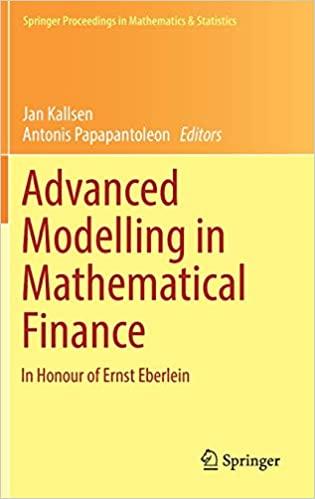
3:47 Ajaan Sir AIBA. Individual As... $49,020 to $84,369 $84,369 to $96,866 $96,866 to $98,040 $98,040 to $117.623 $117,623 to $131.978 $151,978 to $159,483 $159,483 to $216,511 $216,511 to 222,420 S222.420 28.20% 31.00% 32.79% 38.29% 40.70% 44.02% 46.12% 49.80% 53.50% Source-taxtips.ca Furthermore, Diana uses a visa credit card from RBC and her average spending per month amounts to S2000. Diana currently lives on rent, and she plans to purchase her first apartment in the year 2028. Considering her forecasted income, she plans to purchase an apartment within a price range of $500,000 - 5600,000 from the lower mainland. Diana is currently looking for options to grow her funds as well as defer her tax through low-risk investment options. (She expects her income to grow every year). Hence, she is looking for your advice. Now, Diana is considering two options for her former objective Registered Retired Savings Plan (RRSP) Tax-Free Savings Accounts (TFSA) . Diana has an RRSP contribution limit of $12,200 and a TFSA contribution limit of $10,600 for 2021. Assume you are a financial consultant and you have received all the above information regarding Diana, and she wishes to clarify the following from you. An extract from her email to you is as follows: "To - Financial Consultant From - Diana Homes Dear Financial Consultant, Considering my financial situation and future plans, can you please compile a report which addresses the following; 1. The amount of tax I will pay to the CRA (without any contributions to RRSP or TFSA). Please ignore my husband's income since I wish to know the amount I will pay to the CRA individually. For knowledge purposes, please show me workings for each step of the former calculation. 2. I am planning to invest $10,000 in an RRSP with a rate of return of 3% per annum which would mature in 5 years' time (Guaranteed Investment Certificate). If I go ahead with this initiative. a. Calculate the revised tax payable (for me individually) to the CRA along with the former contribution to the RRSP. b. Advise/Recommend me, when my investment grows, how will this defer my tax while in the RRSP? c. Considering my annual income and my current financial status, is it a good move to purchase my first house? If so, how do you think I should invest in the former? justify your arguments as to why you think it is both feasible and beneficial for me d. Advise/Recommend me of the implications if I access funds in the RRSP to buy my first home. what government benefits can I get, please quantify your alternatives with suitable justifications) 3. I am also interested in a TFSA, can you please advise me on the following: How does a TFSA differ from an RRSP? b. Recommend me as to how does the TFSA fit into my portfolio? What should I invest in? c. Recommend me, how much should I invest in a single TFSA investment? considering my financial situation 1 3:47 Ajaan Sir AIBA. Individual As... $49,020 to $84,369 $84,369 to $96,866 $96,866 to $98,040 $98,040 to $117.623 $117,623 to $131.978 $151,978 to $159,483 $159,483 to $216,511 $216,511 to 222,420 S222.420 28.20% 31.00% 32.79% 38.29% 40.70% 44.02% 46.12% 49.80% 53.50% Source-taxtips.ca Furthermore, Diana uses a visa credit card from RBC and her average spending per month amounts to S2000. Diana currently lives on rent, and she plans to purchase her first apartment in the year 2028. Considering her forecasted income, she plans to purchase an apartment within a price range of $500,000 - 5600,000 from the lower mainland. Diana is currently looking for options to grow her funds as well as defer her tax through low-risk investment options. (She expects her income to grow every year). Hence, she is looking for your advice. Now, Diana is considering two options for her former objective Registered Retired Savings Plan (RRSP) Tax-Free Savings Accounts (TFSA) . Diana has an RRSP contribution limit of $12,200 and a TFSA contribution limit of $10,600 for 2021. Assume you are a financial consultant and you have received all the above information regarding Diana, and she wishes to clarify the following from you. An extract from her email to you is as follows: "To - Financial Consultant From - Diana Homes Dear Financial Consultant, Considering my financial situation and future plans, can you please compile a report which addresses the following; 1. The amount of tax I will pay to the CRA (without any contributions to RRSP or TFSA). Please ignore my husband's income since I wish to know the amount I will pay to the CRA individually. For knowledge purposes, please show me workings for each step of the former calculation. 2. I am planning to invest $10,000 in an RRSP with a rate of return of 3% per annum which would mature in 5 years' time (Guaranteed Investment Certificate). If I go ahead with this initiative. a. Calculate the revised tax payable (for me individually) to the CRA along with the former contribution to the RRSP. b. Advise/Recommend me, when my investment grows, how will this defer my tax while in the RRSP? c. Considering my annual income and my current financial status, is it a good move to purchase my first house? If so, how do you think I should invest in the former? justify your arguments as to why you think it is both feasible and beneficial for me d. Advise/Recommend me of the implications if I access funds in the RRSP to buy my first home. what government benefits can I get, please quantify your alternatives with suitable justifications) 3. I am also interested in a TFSA, can you please advise me on the following: How does a TFSA differ from an RRSP? b. Recommend me as to how does the TFSA fit into my portfolio? What should I invest in? c. Recommend me, how much should I invest in a single TFSA investment? considering my financial situation 1







